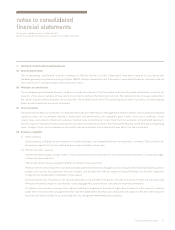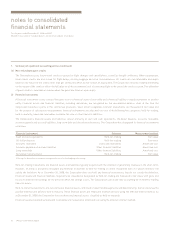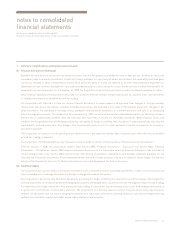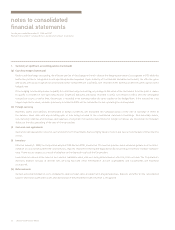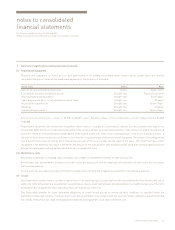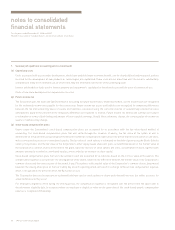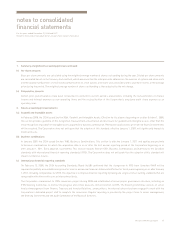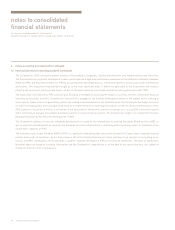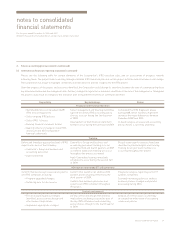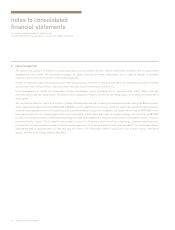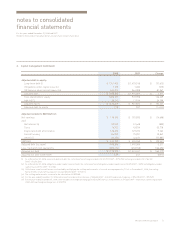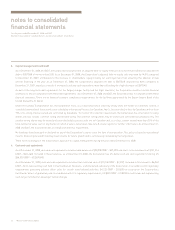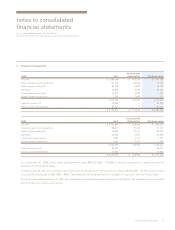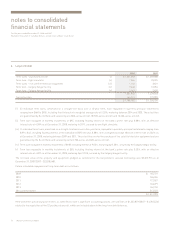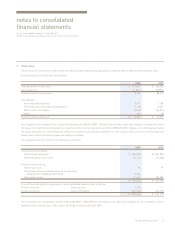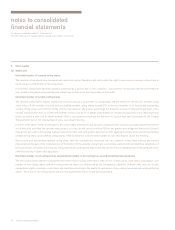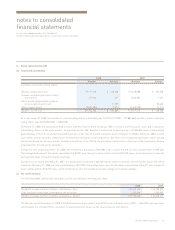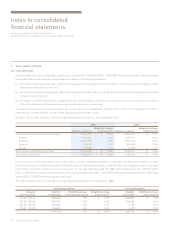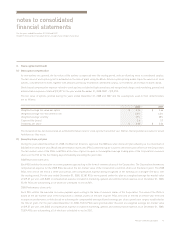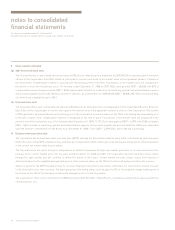Westjet 2008 Annual Report Download - page 74
Download and view the complete annual report
Please find page 74 of the 2008 Westjet annual report below. You can navigate through the pages in the report by either clicking on the pages listed below, or by using the keyword search tool below to find specific information within the annual report.
70 WestJet 2008 Annual Report
notes to consolidated
fi nancial statements
For the years ended December 31, 2008 and 2007
(Stated in thousands of Canadian dollars, except share and per share data)
3. Capital management
The Corporation’s policy is to maintain a strong capital base so as to maintain investor, creditor and market confi dence and to sustain future
development of the airline. The Corporation manages its capital structure and makes adjustments to it in light of changes in economic
conditions and the risk characteristics of the underlying assets.
In order to maintain or adjust the capital structure, the Corporation may from time to time purchase shares for cancellation pursuant to normal
course issuer bids to offset dilution, issue new shares and adjust current and projected debt levels.
In the management of capital, the Corporation includes shareholders’ equity (excluding AOCL), long-term debt, capital leases, cash and
cash equivalents and the Corporation’s off-balance-sheet obligations related to its aircraft operating leases, all of which are presented in
detail below.
The Corporation monitors capital on a number of bases, including adjusted debt-to-equity and adjusted net debt to Earnings Before Interest,
Taxes, Depreciation and Aircraft Rent (EBITDAR). EBITDAR is a non-GAAP fi nancial measure commonly used in the airline industry to evaluate
results by excluding differences in the method by which an airline fi nances its aircraft. In addition, the Corporation will adjust EBITDAR for one-
time special items, for non-operating gains and losses on derivatives and for gains and losses on foreign exchange. The calculation of EBITDAR
is a measure that does not have a standardized meaning prescribed under GAAP and is therefore not likely to be comparable to similar measures
presented by other issuers. The Corporation adjusts debt to include its off-balance-sheet aircraft operating leases. Common industry practice
is to multiply the trailing twelve months of aircraft leasing expense by 7.5 to derive a present value debt equivalent. The Corporation defi nes
adjusted net debt as adjusted debt less cash and cash equivalents. The Corporation defi nes equity as the sum of share capital, contributed
surplus and retained earnings, and excludes AOCL.



